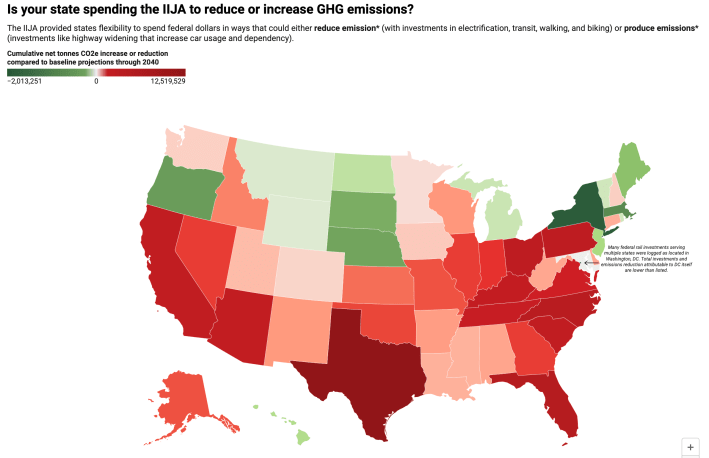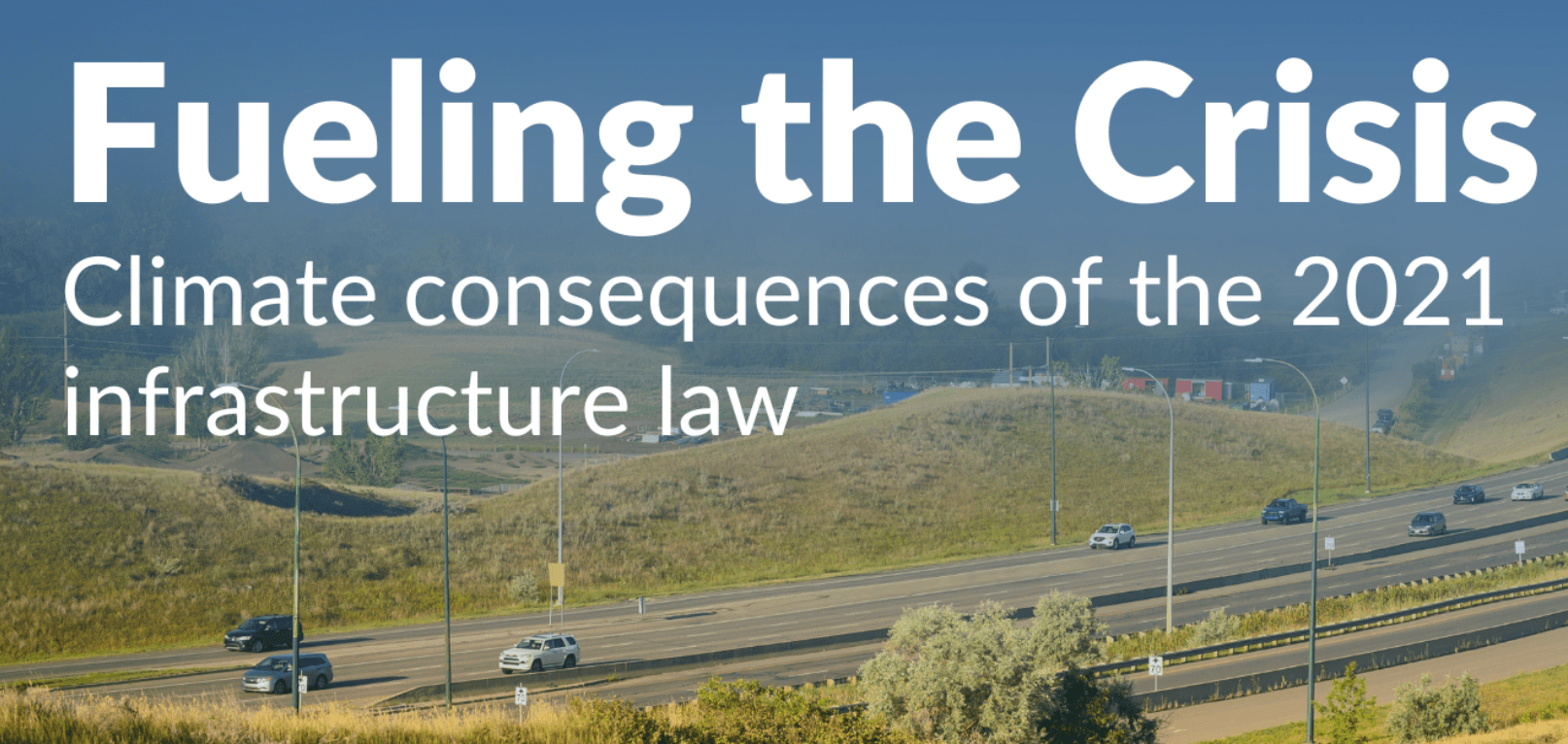Two important reports came out recently, both detailing how federal transportation funding will result in higher greenhouse gas emissions, undermining other state and federal investments to reduce them. In almost every state, federal funding on highway expansions far outstrips spending on transit, active transportation, electrification, and all other programs that aim to reduce emissions.
California is no exception.

Streetsblog NYC covered the report from Transportation for America, Fueling the Crisis: Climate consequences of the 2021 Infrastructure Law. It analyzes nationwide federal spending from the Infrastructure Investment and Jobs Act, the signature Bipartisan Infrastructure Law championed by President Biden. When the law passed in 2021, the administration touted it as a win for the environment as well as for infrastructure investment - and in some ways it was. It included a number of new discretionary and competitive programs that invested in transit, rail, and vehicle electrification, for example.
Most of the discretionary funding awarded by the Bipartisan Infrastructure Law went to public transit and passenger rail, which will support lowering emissions.
But these programs are dwarfed by the amount that is allocated to states via formula funding - each state gets a certain percentage of the total, based on population - and there are few strings attached to that. In the bill's original version, passed by the House, guardrails would have ensured that states planning to use the funding for highway expansion had the money, or at least a plan, to maintain that new capacity, and were making progress towards maintenance on what they had already built. But that got stripped out of the final IIJA, and states are allowed to use funding pretty much wherever they want.
And most are spending it on highway projects that have been lined up in the "pipeline" for years. There is a lot of money available through the IIJA (California alone expects to receive $41 billion through 2026, with $31 billion of that for transportation), and over the years a backlog of highway expansion projects means there are shovel-ready and close-to-shovel-ready projects waiting for it. The Rebuild California site shows that by far the largest category of state IIJA spending, at $15.5 billion, is going for "roads, bridges, and major projects."
Some of this is certainly necessary, and maintaining what is already built is important. But many expansion projects were conceived and planned during an era when more lanes were seen as a way to "fix" congestion, which was considered the biggest transportation problem that needed fixing. Even though it's abundantly clear that more lanes don't help, the notion that bigger freeways are better has a tight hold on DOTs, and Caltrans is no exception.
While California spends some of the federal money - and a lot of its own money - on climate-supportive projects, reductions from those won't be enough to make up the difference. T4America estimates that the increase in emissions over time will be almost twice as much as any reductions resulting from federal investments.
A chart in the report's appendix shows investments by county - how much is going towards highway expansions, highway resurfacing, active transportation and demand management, public transit and passenger rail, electrification, freight, and others. It also shows relative increases or decreases in estimated emissions as a result of these investments. Many of California's counties are deeply red, meaning their expected increase in emissions is considerable (Kern County: +48K tons of CO2; Riverside County: +251K; Yuba County: +265K).
Not all, though; the counties that are investing more public transportation or maintenance than in highway expansion will see overall reductions from these investments (Contra Costa County: -69K tons of CO2; San Mateo County: -254K; Alameda County -148K).

California is not the worst - thanks, Texas and Florida! But this is bad. This spending undermines all the other investments that are slowly and with much difficulty and resistance working towards emission reductions.
While the T4America analysis shows a slight downward trend in the percentage of federal funding spent on highway expansions over time, including in California, it will remain one of the largest expenditures in the coming years.
And the money available for highway funding is being spent faster than other programs, likely because highway projects are lined up and ready to go and transit, rail, and electrification projects are slower to roll out. That means, first, that the emissions will go up before any emission reductions can come into play. And second, judging from past experience, it is likely that the new administration will try to block, delay, slow, or cancel funding for non-highway programs.
California is grappling with this but is moving too slowly.
The T4America report analyzes only IIJA investments. A second report, from Brookings Institute and covered by Streetsblog USA, looked at the way states spend and report on their federal formula funding. At least compared to other states, California does a better job at transparency and has a public-facing authority to oversee funding decisions. But the bar is low.
California's transportation funding landscape is famously complex and difficult to make comparisons about. Advocates have pushed to get Caltrans to be more transparent about its spending, but progress is small and incremental. Recently passed bills, including the Complete Streets bill and the Transportation Accountability Act, A.B. 2086, call for more transparency in the way Caltrans reports on its funding. A.B. 2086 also calls for making the connections between where funding goes and state climate goals more clear.
"California needs to commit to its climate priorities, especially if it's going to claim to be a climate leader," said Corrigan Salerno, one of the report's authors. "Part of that requires rethinking about how Caltrans operates, and what its goals are. Right now, congestion relief is still a major goal. Yet every time they have tried to build for congestion relief, it has not worked."
This is not the first time that Streetsblog California has covered reports with similar conclusions. California talks big on climate, and spends a fair amount of money on solutions. But as long as California is also investing in new capacity for autos and freight trucks, that effort is wasted.
Transportation for America will host a webinar on its report on December 5 at 11 a.m. Register at this link.






